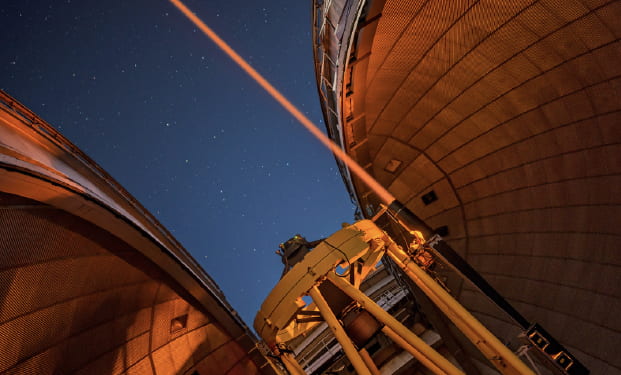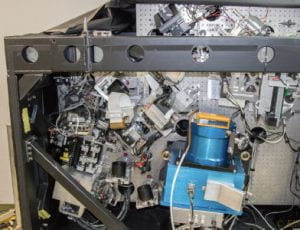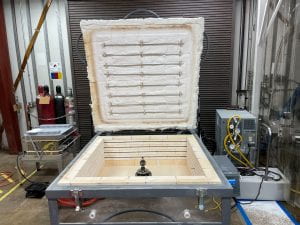

Dr. Phil Hinz – Director, Laboratory for Adaptive Optics develops instrumentation related to the study of exoplanets. He served as the principal investigator for the NASA Large Binocular Telescope Interferometer, which carried out a first look for asteroid belts and dust around nearby stars. Email: phinz@ucsc.edu
The Laboratory for Adaptive Optics (LAO) enables exploratory research and development of adaptive optics systems for the next generation of high resolution astronomy instrumentation.The laboratory is a component of University of California Observatories, with facilities located on the UC Santa Cruz campus.

We develop, assemble, and deploy complex adaptive optics instruments for the world’s largest telescopes in support of UC Astronomy, including those at the Keck, Gemini, and Lick Observatories. We have a close affiliation with the UC Center for Adaptive Optics where our educational and outreach activities include hosting PhD thesis research, a summer school on adaptive optics, and seminars and workshops in the AO related fields We actively solicit collaboration with industry and partner observatories to pursue goals benefiting the astronomical AO community.
The LAO was initiated with a generous grant from the Gordon and Betty Moore Foundation.
Current Projects

Developing a new Laser Guide Star Adaptive Optics system for the Shane Telescope on Mount Hamilton.
Developing an “Extreme” Adaptive Optics system for imaging planets around nearby stars – now at the Gemini South 8-meter telescope in Chile.
Developing Keck Next-Generation Adaptive Optics; a laser guidestar AO system for the Keck telescope – High Strehl broad spectrum science imaging and spectroscopy over the near-infrared bands 0.7 to 2.2 microns.

